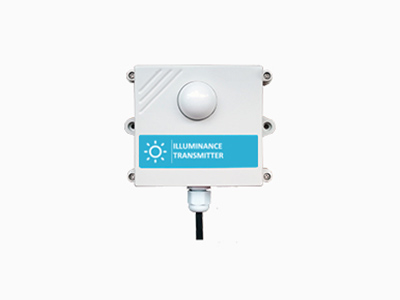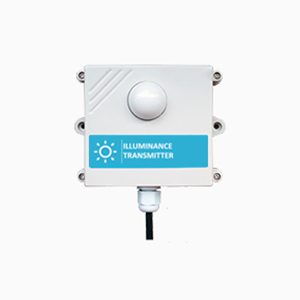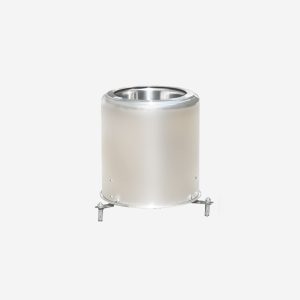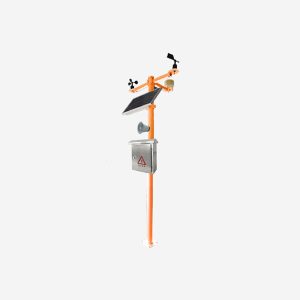Product Introduction:
What is a sun sensor? Sunlight sensor is a kind of high precision light sensitive transmitter, the output value measurement unit is lux. The illuminance sensor is used for outdoor light intensity measurement. The illuminance sensor uses a wall-mounted waterproof housing. There are two ranges: 0-65,535 lux and 0-20 million lux. We provide the sun sensor and the temperature, humidity and Light sensors in one.
* Model: JXBS-3001-GZ
* Minimum order quantity: 1 piece
* Delivery time: within 24 hours
Features:
1. High-precision illuminance detection measuring range 0-60000 Lux, 0-200000 Lux optional.
2.4-20mA/0-10V/0-5V/RS485 multiple output signals are optional.
3. IP65 high protection level, can be used in an outdoor or harsh on-site environment.
4.10-30V DC wide voltage power supply.
5. We offer many types of solar light sensors for different applications. Some light sensors can integrate many other modules to measure many elements.

Parameters:
Measurement parameter: illuminance
Model: JXBS – 3001 – GZ
Communication mode: 4-20mA
Power supply: 12-24V power supply
Measurement range: 0-10000
Material: ABS.
DC power supply (default) : 12-24V DC
Light intensity accuracy: ±5%(25℃)
Light intensity: 0-65,535Lux / 0-200,000 Lux
Long-term stability (light intensity) : ≤5%/y
Output signal: 4-20ma
Power consumption: ≤0.15W (@12V DC, 25℃)
Working pressure range: 0.9-1.1atm

Attention:
The illuminance sensor shall be installed in an open surrounding area without any obstacles above the sensing surface. Then the plug of the radiometer cable is directly to the north, the horizontal position is adjusted and fixed firmly, and the total radiometer output cable is connected to the recorder for observation. It is best to secure the cable firmly to the mounting rack to reduce breakage or intermittent interruption on windy days.
FAQs:
1. Why do we need to measure light?
Sunlight is important for agriculture, especially in water-scarce areas. Different crops require different amounts of sunlight, so it’s important to know which fields are most exposed. With water supplies increasingly strained in many areas, farmers have an economic and social obligation to limit water consumption while keeping their crops hydrated. One strategy adopted is to water crops in the afternoon or evening to prevent the soil and plants from being scorched by the sun before they can absorb water. You can use light sensors to automatically manage the sprinkler system and only water when the sun is not at its brightest. When combined with other weather monitoring equipment to collect data on temperature, pressure, and humidity.
2. How does the sun sensor work?
How the illuminance sensor works: The illuminance sensor is based on the hot spot effect principle. The sensor mainly uses detection elements sensitive to low light. These sensing elements are actually like the photographic matrix of a camera. The wire – wound electroplated multi – junction thermopile has a high absorptance black coating on its surface. The hot end is located on the sensing surface and the cold end is located in the body. Hot and cold junctions generate thermoelectric potentials. In the linear range, the output signal is proportional to the solar irradiance. The visible light of the filter irradiates the imported photodiode, which is converted into an electrical signal according to the visible illuminance.
Light sensors can convert light intensity values into voltage values. The light intensity sensor consists of transmitter, receiver and detection circuit. The transmitter aims at the target to emit the beam, the beam continuously emits or changes the pulse width; The triangular mirror structure is strong and the emitter can accurately return the beam from the mirror; The receiver is composed of a photodiode, a phototransistor and a photocell. The front of the receiver is the lens, aperture and other optical elements, and the back is the detection circuit. It can filter out valid signals and send them.
3. Where to use the illuminometer?
Illuminometer is widely used in agriculture, forestry, greenhouse cultivation, breeding, building light measurement and research. The application of light sensor in agricultural planting and livestock breeding can help us accurately grasp the sunshine time rule, light saturation point and light compensation point of the production and growth of plants and livestock, and then adjust the light through artificial control. Technology. Give priority to control and improve the scientific growth of livestock, poultry and crops to achieve the goal of high yield.





Reviews
There are no reviews yet.